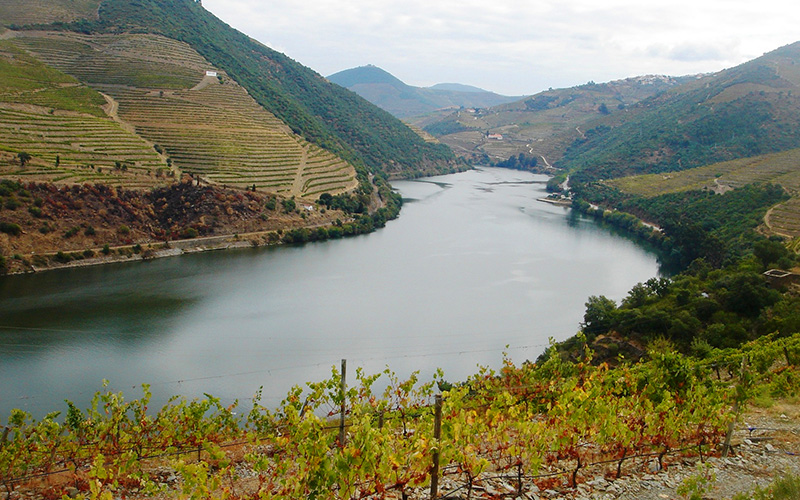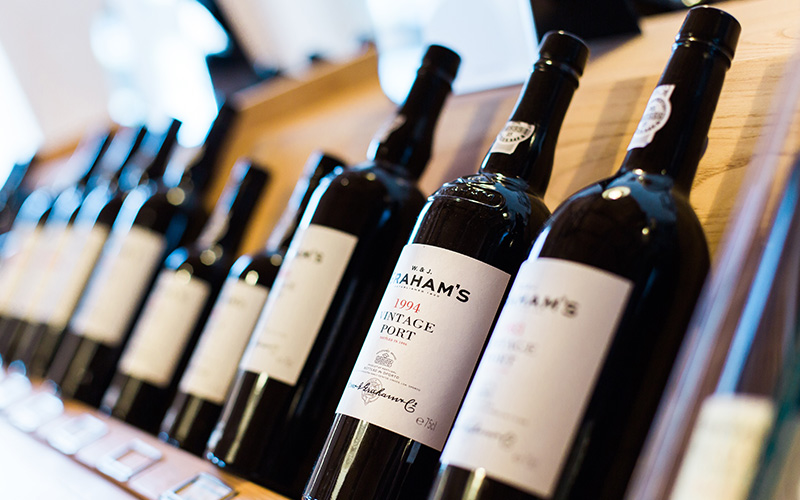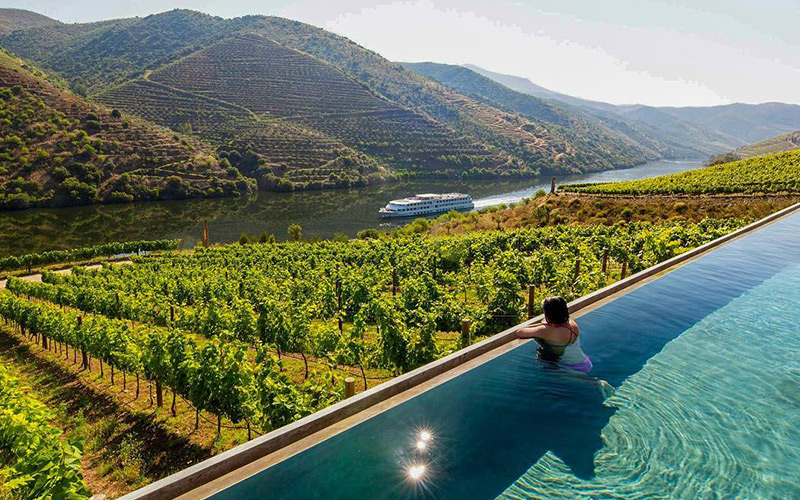It’s no secret that we’re advocates for South Africa’s incredible and diverse wine scene, but the time has come to place Portugal in the spotlight. While wine geeks are no doubt familiar with the amazing wines produced in the land of pasteis de nata and peri-peri, for many this wine destination remains a hidden gem waiting to be discovered. Whether you consider yourself an expert or simply love a great glass of wine, here’s your guide to Portugal’s wine scene and why it needs to be added to your travel list immediately.
Why Portugal?
There are some very good (and delicious) reasons for the recent influx of interest, not least of which includes the fact that Portugal is as affordable as it is beautiful. Firstly, the dining is rooted in tradition with a modern twist. Their foodie culture is orientated around a strongly nautical-theme, with fresh seafood such as octopus and salted cod available at almost every grocery store and restaurant (and obviously don’t leave without trying the ubiquitous pasteis de nata for dessert!). Beyond this, the country’s rich history literally decorates the street, with Azulejo tiles donning building facades and canary-yellow trams waddling up the cobbled streets. Your Instagram feed won’t know what hit it. Add to this a good dose of fado (a rather melancholic genre of music) and the wonderfully warm Mediterranean climate, and you’ve got a pretty nifty holiday. But perhaps the most important reason Portugal should be on your bucket list is that it has a thriving wine industry, with some of the most dramatic and striking vineyards in the world.

Where To Go?
While Bordeaux and Burgundy might be the classic wine lover meccas, Portugal has become increasingly pilgrimage-worthy. There are 14 wine regions spread throughout the country, which can be organised into five different areas:
- Porto and North region: Vinho Verde, Trás-os-Montes, Porto and Douro, and Távora and Varosa;
- Centre region: Bairrada, Dão and Lafões, and Beira Interior;
- Lisbon region: Lisbon, Setubal Peninsula, and Tejo;
- South region: Alentejo and Algarve;
- Islands: Madeira and Azores.
Each one of these wine regions has its own wines, so it’s important to organise your trip taking this into consideration.
A great place to start is in Porto – a coastal city in northwest Portugal known for its stately bridges and port wine production. There are plenty of trains that lead into the Douro Valley from here – a region made famous for its impossibly steep banks and carved out terraces. It’s worth the train ride to go to the end as some of the most spectacular Douro views are between Régua and Pocinho (last stop).
Over 2000 winegrowers have made the Douro Valley their home, and it should come as little surprise that this is now a UNESCO World Heritage Site. It is wild, rugged and truly spectacular while maintaining a humility and earthiness that makes this a welcoming destination to all visitors. Dotted all along the valley are Quintas – Portugal’s answer for wineries. It’s easy to spend the rest of the afternoon on a terrace, overlooking the vineyards and sipping on elegant white wines.


What To Drink?
Vinho Verde
Vinho Verde refers to a Portuguese wine that originated in the historic Minho province in the far north of the country. Important: Vinho Verde does not refer to a grape variety. Instead, it refers to the protected wine region that has exclusive rights to produce this specific kind of wine (similar to how Champagne can only be called ‘Champagne’ if it is made in the region. See our previous post for details). The name literally means “green wine,” but translates as “young wine”, with wine being released 3-6 months after the grapes are harvested. These wines are loved for their zesty acidity, subtle carbonation, and lower alcohol, making them a great choice for summer.
Verdelho
Verdelho is a white wine grape grown throughout Portugal, though most associated with the island of Madeira. With its fresh, tropical fruit characters, un-oaked style, and sheer drinkability, it is the ultimate crowd-pleaser.
Port and Porto Tónico
If you’re in Porto, obviously try Port – a fortified wine produced with distilled grape spirits that is typically served as a dessert wine. If you’re travelling in summer, order yourself a Porto Tónico by the river – a refreshing summer cocktail combination of White Port with tonic. You could easily pass an entire lazy afternoon sipping these alongside the Douro river.

Top Wine Estates
These are worth a visit if you are heading to Portugal and want to explore wine country:
Colares – Located on a tiny strip of craggy Atlantic coastline just an hour west of Lisbon
Douro – The Douro has become a holiday destination in itself
Quinta das Carvalhas
The Alentejo – Known for its cork trees, pink marble, and black pig (pata negra), the Alentejo is the largest wine-producing region in Portugal.
Wine Shops:
If you’re short on time, do yourself a favour and just wander into a local wine shop. You’ll most likely be gobsmacked by the affordability of the wines, with most bottles floating between the € 1.5 – € 3.00 range.


Don’t worry if you can’t get a grip on the Portuguese wines as they have what seems like hundreds of grape varieties and a lot of teeny tiny sub-regions. That’s not your concern. When you go to Portugal, just know that you’re going to be enjoying amazing wine at really fantastic prices. When choosing a destination, if your criteria is to have good wine, exciting food and be easy on the wallet, then book yourself on a flight to Portugal – rápido!
